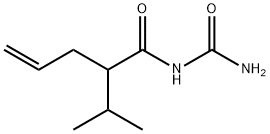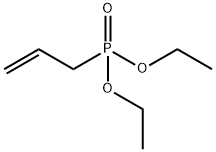N-Allylthiourea
Synonym(s):1-Allyl-2-thiourea;N-Allylthiourea;Thiosinamine
- CAS NO.:109-57-9
- Empirical Formula: C4H8N2S
- Molecular Weight: 116.18
- MDL number: MFCD00004940
- EINECS: 203-683-5
- SAFETY DATA SHEET (SDS)
- Update Date: 2025-02-23 21:28:46

What is N-Allylthiourea?
Chemical properties
white crystals or powder. Melting point 76~78.5 ℃, relative density is 1.110, soluble in water and ethanol, slightly soluble in ethanol, insoluble in benzene, with a garlic odor. It is used as an additive for cyanide-free copper plating to increase the brightness and corrosion resistance of plated products.
The Uses of N-Allylthiourea
N-Allylthiourea is a nitrification inhibitor used in the study on the transformation of diclofenac, naproxen and bisoprolol under aerobic and anaerobic conditions. It is also used in medicine to minimize scar tissue in order to fight against a type of dermatitis. Further, it inhibits the growth of transplanted tumors in mice. It acts as a chelating agent. In addition, it is used in cosmetics, preservative and in organic synthesis.
Definition
ChEBI: Allylthiourea is a thiourea with a prop-2-enyl group attached to one of the amines. It has a role as a metabolite. It is functionally related to a thiourea.
Preparation
In the presence of potassium iodide, in ethanol solution, chloropropene is reacted with sodium thiocyanide to form allyl isothiocyanate, which is then ammoniated in ammonium hydroxide solution, concentrated, cooled and crystallized, filtered, washed, and recrystallized in ethanol or water to produce Allylthiourea.
General Description
White crystalline solid with a slight garlic odor.
Air & Water Reactions
Soluble in water.
Reactivity Profile
Allylthiourea may react vigorously with strong oxidizing agents. Can react exothermically with reducing agents (such as alkali metals and hydrides) to release gaseous hydrogen. May react exothermically with both acids and bases. May generate flammable gases in combination with aldehydes, nitrides, and hydrides. Incompatible with peroxides and acid halides.
Health Hazard
SYMPTOMS: Contact eczema due to sensitization in humans has been reported.
Fire Hazard
Flash point data are not available for Allylthiourea, but Allylthiourea is probably combustible.
Biochem/physiol Actions
N-Allylthiourea inhibits the growth of transplanted tumours in mice.
Purification Methods
Recrystallise it from H2O. It is soluble in 30 parts of cold H2O, and it is soluble in EtOH but insoluble in *C6H6. It has also been recrystallised from acetone, EtOH or ethyl acetate, after decolorising with charcoal. The white crystals have a bitter taste with a slight garlic odour and are TOXIC. An unstable crystalline form is obtained by recrystallising from the melt. [McCrone et al. Anal Chem 21 421 1949, Beilstein 4 IV 1072.]
Properties of N-Allylthiourea
| Melting point: | 70-72 °C(lit.) |
| Boiling point: | 191.3±33.0 °C(Predicted) |
| Density | 1.11 g/mL at 25 °C(lit.) |
| refractive index | 1.5936 (estimate) |
| storage temp. | Store below +30°C. |
| solubility | H2O: soluble30 parts |
| form | Powder, Crystals, Granules or Chunks |
| pka | 14.57±0.70(Predicted) |
| color | White to light beige |
| Specific Gravity | 1.111.219 (20/20℃) |
| Water Solubility | 67 g/L (20 ºC) |
| Merck | 14,9362 |
| BRN | 1071470 |
| Stability: | Stable. Incompatible with strong oxidizing agents. |
| CAS DataBase Reference | 109-57-9(CAS DataBase Reference) |
| NIST Chemistry Reference | Allylthiourea(109-57-9) |
| EPA Substance Registry System | Allylthiourea (109-57-9) |
Safety information for N-Allylthiourea
| Signal word | Danger |
| Pictogram(s) |
 Skull and Crossbones Acute Toxicity GHS06 |
| GHS Hazard Statements |
H301:Acute toxicity,oral |
| Precautionary Statement Codes |
P264:Wash hands thoroughly after handling. P264:Wash skin thouroughly after handling. P270:Do not eat, drink or smoke when using this product. P301+P310:IF SWALLOWED: Immediately call a POISON CENTER or doctor/physician. P405:Store locked up. P501:Dispose of contents/container to..… |
Computed Descriptors for N-Allylthiourea
| InChIKey | HTKFORQRBXIQHD-UHFFFAOYSA-N |
New Products
1-Boc-4-cyanopiperidine tert-Butyl carbazate 1-(TERT-BUTOXYCARBONYL)-2-PYRROLIDINONE TETRABUTYLAMMONIUM CYANIDE TETRAHYDRO-2H-PYRAN-3-OL 3-Pyridineacrylic acid Nickel(II) perchlorate hexahydrate, 98% 4-Bromophenylacetonitrile, 95% 3-Bromo-4-fluoroaniline, 97% Sodium tetraborate decahydrate, 98% Palladium(II) acetate, trimer, Pd 99% 4-Bromo-2-chlorotoluene, 97% Tadalafil Clopidogrel bisulfate Sitagliptin Phosphate Monohydrate Cabergoline Fexofinadine HCl Etoricoxib 4-Amino Acetophenone 2-Chloro Acetophenone Amlodipine Base 2,3,5-Triiodobenzoic Acid Pyrrolidine Diiodo PentoxideRelated products of tetrahydrofuran








You may like
-
 N-Allylthiourea CAS 109-57-9View Details
N-Allylthiourea CAS 109-57-9View Details
109-57-9 -
 N-Allylthiourea CAS 109-57-9View Details
N-Allylthiourea CAS 109-57-9View Details
109-57-9 -
 N-Allylthiourea, 98% CAS 109-57-9View Details
N-Allylthiourea, 98% CAS 109-57-9View Details
109-57-9 -
 N Allylthiourea extrapure CAS 109-57-9View Details
N Allylthiourea extrapure CAS 109-57-9View Details
109-57-9 -
 N-Allylthiourea CAS 109-57-9View Details
N-Allylthiourea CAS 109-57-9View Details
109-57-9 -
 366789-02-8 Riveroxaban 98%View Details
366789-02-8 Riveroxaban 98%View Details
366789-02-8 -
 Carvedilol 98%View Details
Carvedilol 98%View Details
72956-09-3 -
 73590-58-6 Omeprazole 98%View Details
73590-58-6 Omeprazole 98%View Details
73590-58-6
